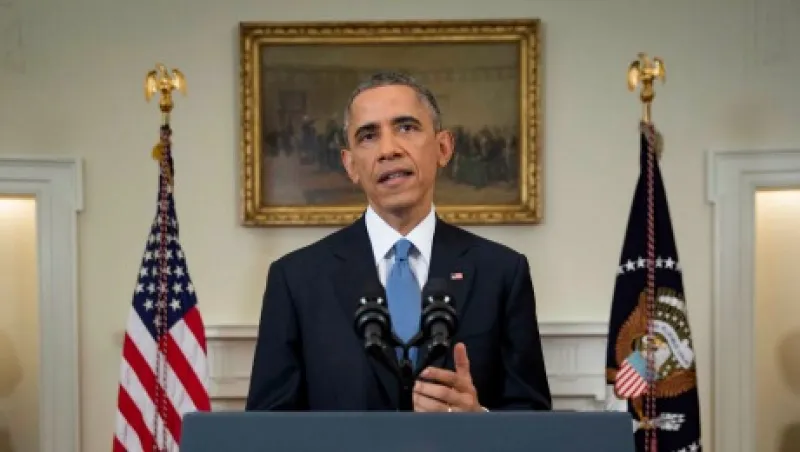One day after the Federal Reserve took its first small step toward tightening, oil has returned to the spotlight as the primary macro narrative for financial markets. Yesterday’s dramatic announcement that the U.S. would begin normalizing relations with Cuba after half a century of isolation, while a major political development for the hemisphere, was also perceived by many analysts as the latest big geopolitical impact of low oil prices. After a rally in recent sessions both West Texas Intermediate (WTI) and Brent crude futures contracts still remain near multiyear lows. Cuba’s historical patron Russia and its more recent benefactor Venezuela are feeling tremendous stress due to selling pressure in energy markets. According to a research report issued by Morgan Stanley analyst Adam Longson last week, both nations have among the highest relative cash costs to extract oil, largely due to antiquated infrastructure, making their well profitability particularly vulnerable to the sell-off. Cuba’s move to embrace its historical nemesis is regarded by many investors as an admission that Venezuela is unable to help prop up the island nation’s economy in the near term and, with OPEC’s most recent monthly report including a downgrade in demand projects that is at a 12-year low, that this situation is unlikely to change. While oil prices are wreaking havoc in emerging economies dependent on its sale, the impact in North American markets is also being felt. In a note to investors this morning, analyst Vincent Fernando noted that some Japanese investors have begun looking at opportunities to acquire assets in the U.S. “Japanese oil bargain hunters have started to move in hopes of capitalizing on a possible end of export restrictions,” Vincent wrote, adding that “the pivotal bill, introduced by U.S. House Representative Joe Barton, seeks to expand the tiny amount of oil output currently allowable for exports.”
Swiss rates turn negative. For the first time since the 1970s, the Swiss National Bank today moved its benchmark deposit rate to a negative level to charge 0.25 percent on deposits. The change will become effective on January 22, coinciding with the next European Central Bank rate announcement, as the SNB struggles to maintain its currency ceiling of 1.2 Swiss franc per euro.
Chinese housing prices slow their decline. The Chinese National Bureau of Statistics data on housing prices released today indicated a moderation in selling pressure, with 67 of 70 specific city markets tracked declining in November, versus 69 in October. While new home supply levels remain high, recent liquidity actions by the People’s Bank of China have spilled over into mortgage markets. Separately, Chinese media outlets have reported that the PBOC has extended loans to commercial lenders in recent days in response to a sudden increase of over 1.3 percent in the seven-day repurchase rate, the nation’s money market benchmark.
German business sentiment improves. The Ifo Institute’s business climate sentiment index released today improved by a broader-than-forecast margin for the month in the latest signal of a possible modest turnaround in activity in the European Union’s largest economy.
U.S. employment pictures continues to improve. Initial jobless claims fell by 6,000 for the week ended December 13, to a seasonally adjusted 289,000, signaling continued strength in the U.S. employment market. Separately, the American Petroleum Institute’s report on U.S. oil stockpiles will be scrutinized by investors looking for any shift in supply-side dynamics, as oil prices remain under pressure globally.
Portfolio Perspective: Waiting for the Santa Claus Rally — Tom Stringfellow, Frost Investment Advisors
Oil is the designated Grinch for Christmas 2014 — or at least you’d think so if you’re listening to the investors now waiting not-so-patiently for the year-end market Santa Claus rally. Last week the oil spiral continued, with WTI crude prices declining another 12 percent, closely followed by Brent crude, down 10 percent from a week earlier. Investors joined the fray, selling into an already frenzied market, and thus ending what had been a seven-week winning streak. Adding cheaper fuel to the fire, sell-side firms slashed 2015 price forecasts, with one investment team at Morgan Stanley predicting Brent crude trading down to as low as $43 a barrel over the next three quarters. While some fret over coal-stuffed (or oil-soaked?) stockings for the Christmas holidays, some cheer might be taken from glimpses of oil crises past. According to ISI, oil price plunges don’t necessarily portend economic Armageddon; in 1986 and 1996–’98, Brent prices plunged roughly 60 percent (familiar territory of late). For those two distinctive periods, the resultant GDP was up 3 percent and 4.5 percent, respectively. The S&P in 1986 was up 32 percent and surged 70 percent from 1996 to ’98.
Although a Grinch imitator or two in the Senate tried to delay the most recent Congressional funding bill, a $1.1 trillion spending bill will be on its way to the White House for the president’s signature. Over the weekend the Senate voted 56–40 for the long-term funding bill, providing funds for nearly the entire government through the September 30 fiscal year-end (Homeland Security will likely be a fiscal football following the holiday adjournment). While Congress appears to be caught in a fiscal maelstrom of its own design, consumers are beginning to warm up to the holiday season; last week the U.S. Census Bureau announced that retail and food services sales for November, adjusted for seasonal variation, were up $449 billion, an increase of 0.7 percent from the prior month and up 5.1 percent from a year ago. Over the last three months, core retail sales have risen a solid 6.4 percent. The year may still end on a high note for the economy, consumers and, over the longer term, perhaps even the markets.
Tom Stringfellow, is president and chief investment officer, of Frost Investment Advisors, a San Antonio, Texas–based asset management firm with $10 billion in assets under management.






